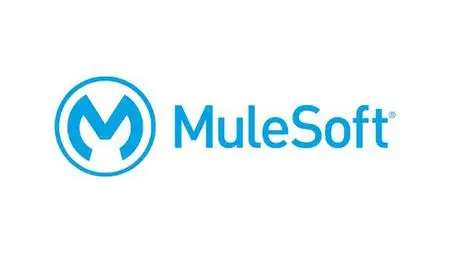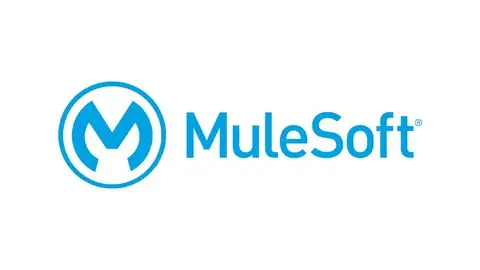Mulesoft Certified Integration Architect Course - Mcia
Published 11/2022
MP4 | Video: h264, 1280x720 | Audio: AAC, 44.1 KHz
Language: English | Size: 7.91 GB | Duration: 19h 7m
Published 11/2022
MP4 | Video: h264, 1280x720 | Audio: AAC, 44.1 KHz
Language: English | Size: 7.91 GB | Duration: 19h 7m
Practical approach to became MuleSoft integration architect and clear MCIA certification.
What you'll learn
Key concepts of Mulesoft's Integration Architecture
100% Readiness for MuleSoft Certified Integration Architect (MCIA) Exam
Should be able to drive an organization’s Anypoint Platform implementation, technical quality, governance, and operationalization of the integration solutions.
Should be able to choose right integration patterns
Should be able to create the high-level design of integration solutions and guide implementation teams on the choice of Mule components and patterns.
Should be able to select the deployment approach and configuration of deployment options (MuleSoft-hosted or customer-hosted control plane and runtime plane).
Should be able to design Mule applications for any of the available deployment options of the Anypoint Platform runtime plane
Should be able apply standard development methods covering the full development lifecycle to ensure solution quality.
Should be able to advise technical teams on performance, scalability, reliability, monitoring and other operational concerns of integration solutions.
Should be able design reusable assets, components, standards, frameworks, and processes to support and facilitate API and integration projects
Requirements
Should have understanding of fundamentals of MuleSoft Development or should have completed MULE ESB developer course
Should have understanding of core anypoint platform concepts
Description
Hello Viewers -I am Chinna Reddy, Technical Architect. I am passionate about sharing my experience and skills in Integration Design and Technical Architecture using Mule ESB.Practical approach to became MuleSoft integration architect and clear MCIA certification.Key concepts of Mulesoft's Integration Architecture.100% Readiness for MuleSoft Certified Integration Architect (MCIA) Exam.Should be able to drive an organization’s Anypoint Platform implementation, technical quality, governance, and operationalization of the integration solutions.Should be able to choose right integration patterns.Should be able to create the high-level design of integration solutions and guide implementation teams on the choice of Mule components and patterns.Should be able to select the deployment approach and configuration of deployment options (MuleSoft-hosted or customer-hosted control plane and runtime plane).Should be able to design Mule applications for any of the available deployment options of the Anypoint Platform runtime plane.Should be able apply standard development methods covering the full development lifecycle to ensure solution quality.Should be able to advise technical teams on performance, scalability, reliability, monitoring and other operational concerns of integration solutions.Should be able design reusable assets, components, standards, frameworks, and processes to support and facilitate API and integration projects.The course is in-depth and adds a lot of value to your career to reach next levels. Thank you.
Overview
Section 1: Introduction
Lecture 1 Architect responsibilities
Section 2: Architecting and designing integration solutions
Lecture 2 Integration solution and case study introduction
Lecture 3 Architecting with 4+1 views
Lecture 4 Documenting integration solutions
Lecture 5 Documenting technical design & use cases for integration solutions
Section 3: Identifying anypoint platform components and capabilities
Lecture 6 Anypoint platform capabilities
Lecture 7 Configure business groups, environments in an organization
Lecture 8 Configure users , roles and permissions within an organization
Lecture 9 Anypoint platform identity management
Lecture 10 Anypoint platform multi factor authentication
Lecture 11 API design best practices
Lecture 12 Framework 1 - Designing efficient API's (case study - ehub-sapi)
Section 4: Design Integration solutions with mule components and re-usable frameworks
Lecture 13 Naming standards and structuring real time mule project
Lecture 14 Implementation of case study : uhub-sapi
Lecture 15 Framework-2: Global error handler
Lecture 16 Framework-3: Mule template project
Lecture 17 Implementation of case study : aws-sapi
Lecture 18 Implementation of case study : who-sapi
Lecture 19 Implementation of case study : covid-papi
Lecture 20 Implementation of case study: covid-eapi
Section 5: Choosing appropriate mule event processing models & design patterns
Lecture 21 Non-blocking reactive event processing by mule 4 runtime
Lecture 22 Thread management and auto tuning of thread pools in mule 4
Lecture 23 Thread management in transactional scopes
Lecture 24 Mule flow processing strategies
Lecture 25 Synchronous mule event processing (request-reply pattern)
Lecture 26 Synchronous mule event processing - idempotent pattern
Lecture 27 Synchronous mule event processing - content negotiation pattern
Lecture 28 Synchronous mule event processing - quick acknowledgement pattern
Lecture 29 Asynchronous Mule event processing (pub sub & broad cast pattern)
Lecture 30 Asynchronous Mule event processing - JMS acknowledgement
Lecture 31 Iterative processing of Mule events - for each
Lecture 32 Iterative processing of Mule events - parallel for each
Lecture 33 Iterative processing of Mule events - batch processing part 1
Lecture 34 Iterative processing of Mule events - batch processing part 2
Lecture 35 Deciding between for each, parallel for each & batch job
Lecture 36 Scheduled mule event processing
Section 6: Designing Transaction Management in Mule Applications
Lecture 37 Transaction management
Lecture 38 Thread management in transactional scopes
Lecture 39 Managing local transactions in mule applications
Lecture 40 Managing XA transactions in mule applications
Section 7: Achieving reliability goals with Mule components
Lecture 41 Achieving reliability using an Until Successful scope
Lecture 42 Achieving reliability reconnection strategies
Lecture 43 Framework-4: JMS message reliability framework
Lecture 44 Achieving reliability for transactional & non-transactional systems
Lecture 45 Balancing tradeoffs to meet non-functional requirements
Section 8: Designing testing strategies for Mule applications
Lecture 46 Unit testing & testing Mule applications using MUnit
Lecture 47 MUnit introduction
Lecture 48 Types of MUnit assertions
Lecture 49 MUnit assertions using dataweave (dwl) file
Lecture 50 MUnit mock input using dataweave (dwl) file
Lecture 51 MUnit mocking processors
Lecture 52 MUnit verify event processor
Lecture 53 MUnit spy event processor
Lecture 54 MUnit parameterized test suite
Lecture 55 MUnit Testing and mocking errors scenarios
Lecture 56 Mock and Assert using JSON files
Lecture 57 MUnit Enable Flow Sources
Lecture 58 MUnit test recorder & scaffold MUnit test cases from an API
Lecture 59 Designing blackbox (functional) integration testing
Lecture 60 Designing performance tests of Mule applications
Section 9: Deciding and understanding of deployment strategies
Lecture 61 Mule deployment models
Lecture 62 Both MuleSoft-hosted control and runtime planes
Lecture 63 MuleSoft-hosted control plane and customer-hosted runtime planes (Hybrid & RTF)
Lecture 64 Both customer-hosted control and runtime planes (PCE & PCF)
Section 10: Designing with Appropriate State Preservation and Management Options
Lecture 65 Mule ESB State preservation and management
Lecture 66 Storing Mule application state using persistent object store
Lecture 67 Identifying MuleSoft object store behavior in CloudHub 1.0 & 2.0 runtime plane
Lecture 68 Identifying MuleSoft object store behavior in customer hosted runtime plane
Lecture 69 Cashing OAuth access token using object store
Lecture 70 Storing Mule application state using persistent VM queues
Lecture 71 Identifying MuleSoft VM queues behavior in CloudHub 1.0 & 2.0 runtime plane
Lecture 72 Identifying MuleSoft VM queues behavior in customer hosted runtime plane
Lecture 73 Load balancing of VM queues in Mulesoft hosted & customer hosted runtime plane
Lecture 74 Managing state with file-based persistence & external storage systems
Lecture 75 Designing Mule applications that use the Cache scope
Lecture 76 Avoiding duplicate processing using watermarks
Section 11: Designing for high-availability goals
Lecture 77 High-availability goals
Lecture 78 High-availability - Active-Active Clustering Deployment Model
Lecture 79 High-availability - Active-Active Clustering Fault Tolerance Deployment Model
Lecture 80 High-availability (HA) goals using Mule runtimes – CloudHub 1.0 & 2.0
Lecture 81 High-availability (HA) goals in customer-hosted runtime planes
Section 12: Designing an Efficient and Automated Software Development Lifecycle
Lecture 82 Importance of maven for mule applications
Lecture 83 Add custom dependency to maven
Lecture 84 Setup maven nexus repository and use in mule projects
Lecture 85 Deploy mule application to CloudHub using maven plugin
Lecture 86 Deploy mule application using profiles maven plugin to multiple environments
Lecture 87 Injecting maven POM properties via settings.xml
Lecture 88 Designing CICD for mule applications
Lecture 89 CICD - Jenkins setup
Lecture 90 CICD - configure jenkins job to deploy mule application to cloudhub
Lecture 91 CICD - trigger Jenkins job automatically
Lecture 92 CICD - jenkins declarative pipeline to build, execute MUnit tests and deploy
Lecture 93 CICD - Externalize runtime properties in jenkins
Lecture 94 CICD - jenkins scripted pipeline to checkout, build, execute MUnit tests, deploy
Section 13: Securing applications
Lecture 95 Securing APIs with policies using API Manager
Lecture 96 Securing APIs with policies using OAuth
Section 14: Designing Effective Logging and Monitoring
Section 15: Optimizing Performance
Lecture 97 Performance - Troubleshooting performance issues at module operations
Lecture 98 Performance - Troubleshooting performance issues due to memory leaks
Lecture 99 Performance - Troubleshoot performance issues on applications unresponsiveness
Organizations if you are new to MuleSoft and would like onboard MuleSoft to your organization,Senior Developers, Architects and Aspiring Architects are best fit for this course,Anyone who are preparing to take Mulesoft Certified Integration Architect exam



